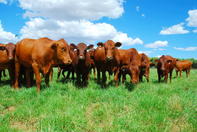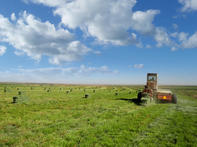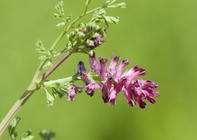“It takes grass to make grass" is a motto used by an awarded cattle farmer of the USA. He focusses on the importance of pasture management to build organic matter in the soil and preserve soil moisture.

Well-managed pastures contribute significantly to the sustainability and health of ecosystems on a farm but equally important, pasture management ensures the success of the potentially expensive operation of planting pastures.
Apart from adequate planning to maximize quality and production of pastures, it is essential to use management practices suited to the type of crop, the livestock you need to feed as well as your farm’s soil, water availability and climate.
When planning a new forage or testing new technology, start on a small scale. Not only will it be easier to manage, but it can be more economical and easier to expand/scale down as you see results.
Weed Control in Pastures

It is important to control weeds during planting of pastures because young seedlings are extremely sensitive to weeds competing for water, nutrients and sunlight. Also, weeds such as ragwort maybe toxic to cattle and horses grazing the pastures. Ideally, the pasture density should be dense enough to limit weed growth.
Overgrazing pastures may result in bare soil. This may benefit weed growth so mulching in your pasture system is recommended, if practically possible. Remember that weeds can be an indicator of nutrient deficiencies/excesses in your soil, for example, the fumaria herb that prefers high potassium soils.
A soil analysis to determine a fertilising program might help you to manage weeds. Weeds can also be chemically controlled. Broadleaf weed control may require multiple herbicide applications or applications during the season. Applications at different times in the year may better control weeds that germinate during different seasons.
Management of Pasture Use

Do not graze too short Do not allow animals to graze on newly planted pastures too early or too frequently. Depending on the crop, wait until plants are at least 20 cm high. Most forage crops should not be grazed shorter than 10 cm, about the width of a hand. This will allow voluminous regrowth. Consider a light stocking rate - a lower number of animals per pasture field. This could be as low as one beef cattle per 3 hectares.
Rotate pastures Consider dividing up pastures into smaller camps to allow for grazed pastures to rest for up to six weeks. Rotate animals between camps, moving them out when pastures are short.
Fertilise pasture Depending on soil analysis, it might be necessary to add nutrients back into the soil. Where legumes have been used as part of the pasture crop mix, it might not be necessary to add nitrogen. Some farmers harrow their pastures after grazing to break up manure and spread it evenly.
Plan the use of pastures The transition of pasture to crop is time critical. This will depend on the end-use of the pasture e.g. hay or silage and the pasture crop mix e.g. grass-legume as well as the growth stage of the pasture mix. Equally time-critical, is the return from crop to pasture.
Will a new pasture be established or will oversowing be done? Oversowing is the technique of sowing a pasture crop such as clover into existing pastures without the tilling or disturbing the soil or preparing a seedbed. In intercropping systems, pasture mixes are grown together. Some growth is harvested for silage, while the rest is allowed to grow for use as grazing.
By Marinda Louw